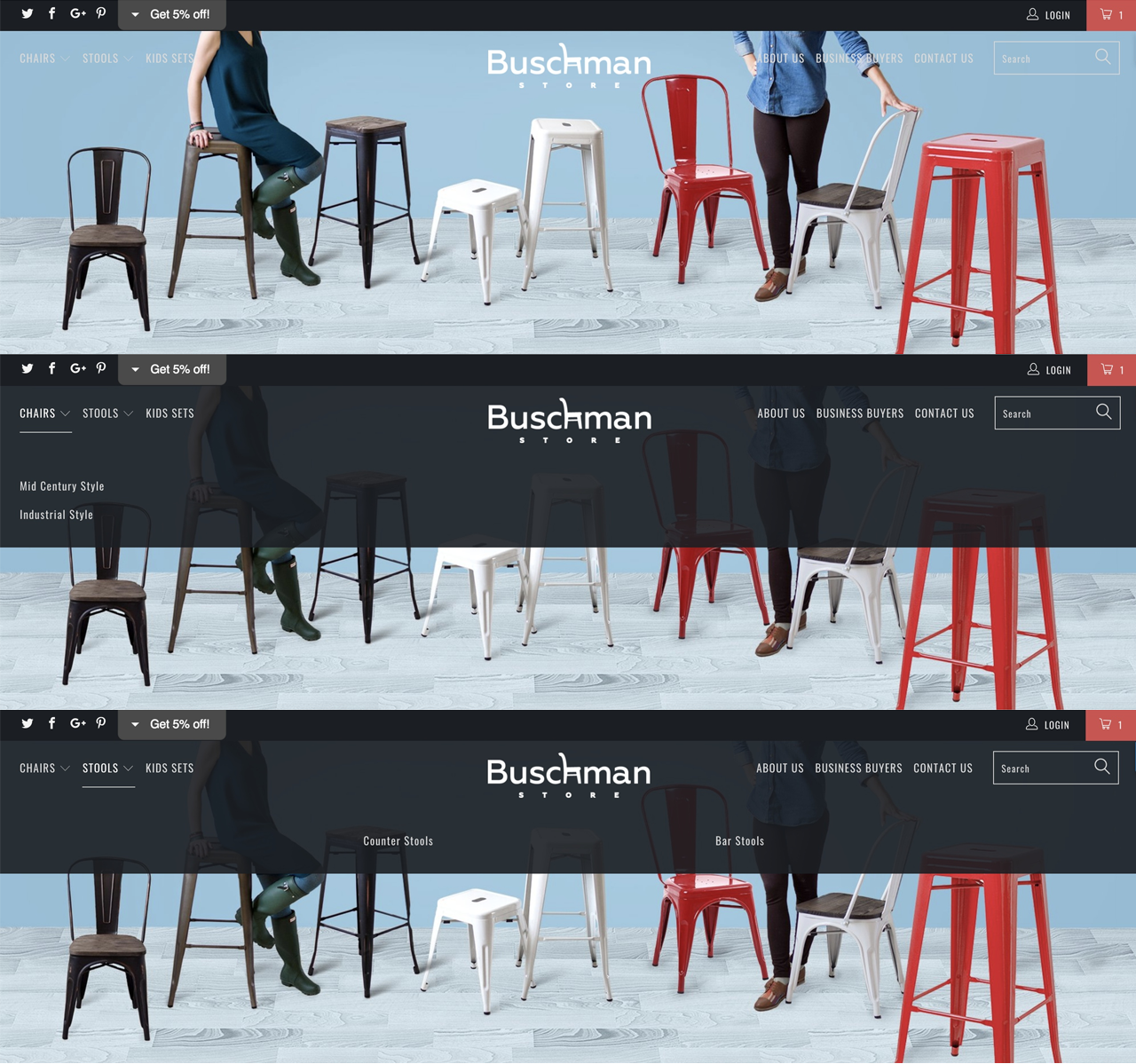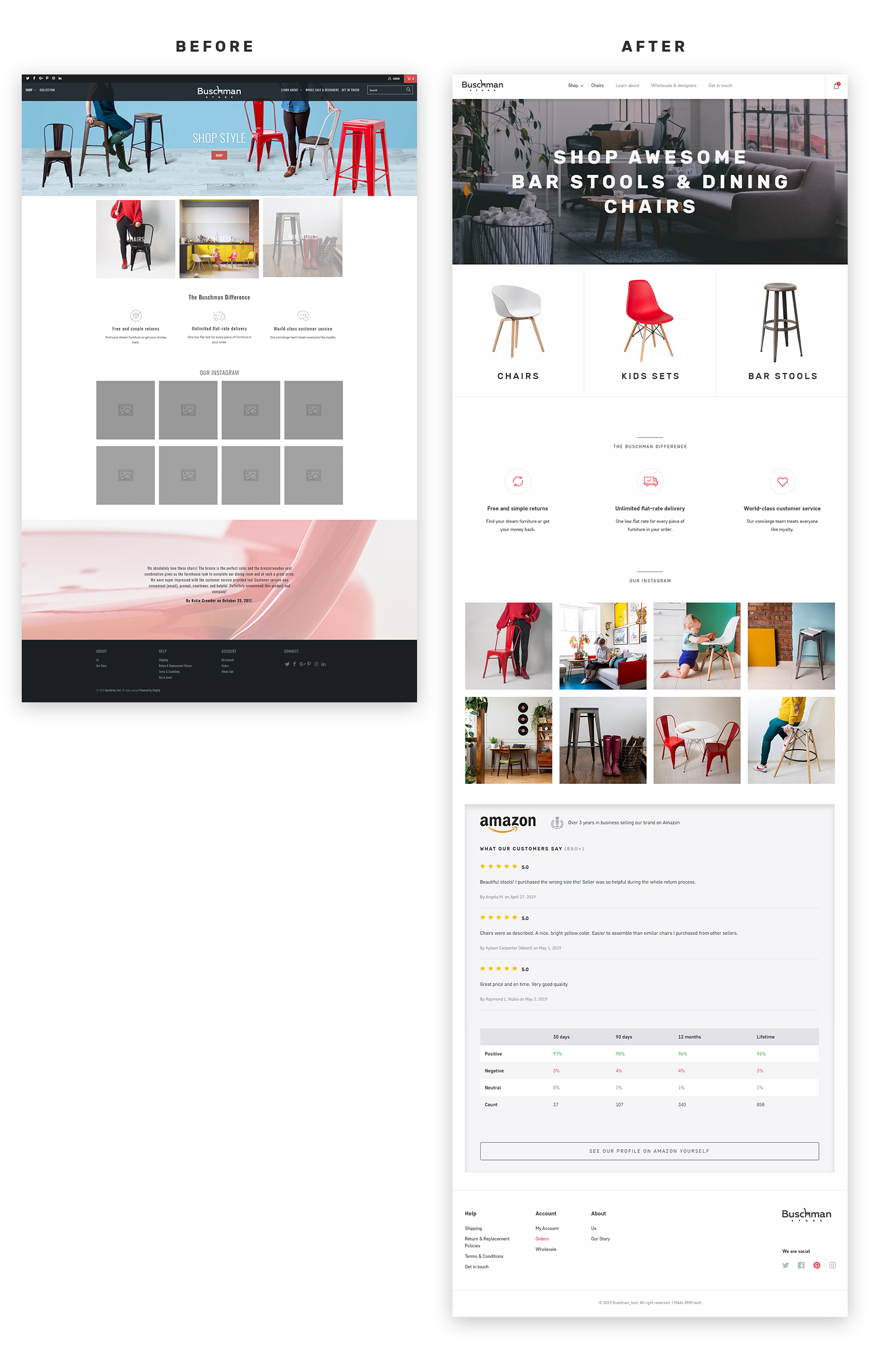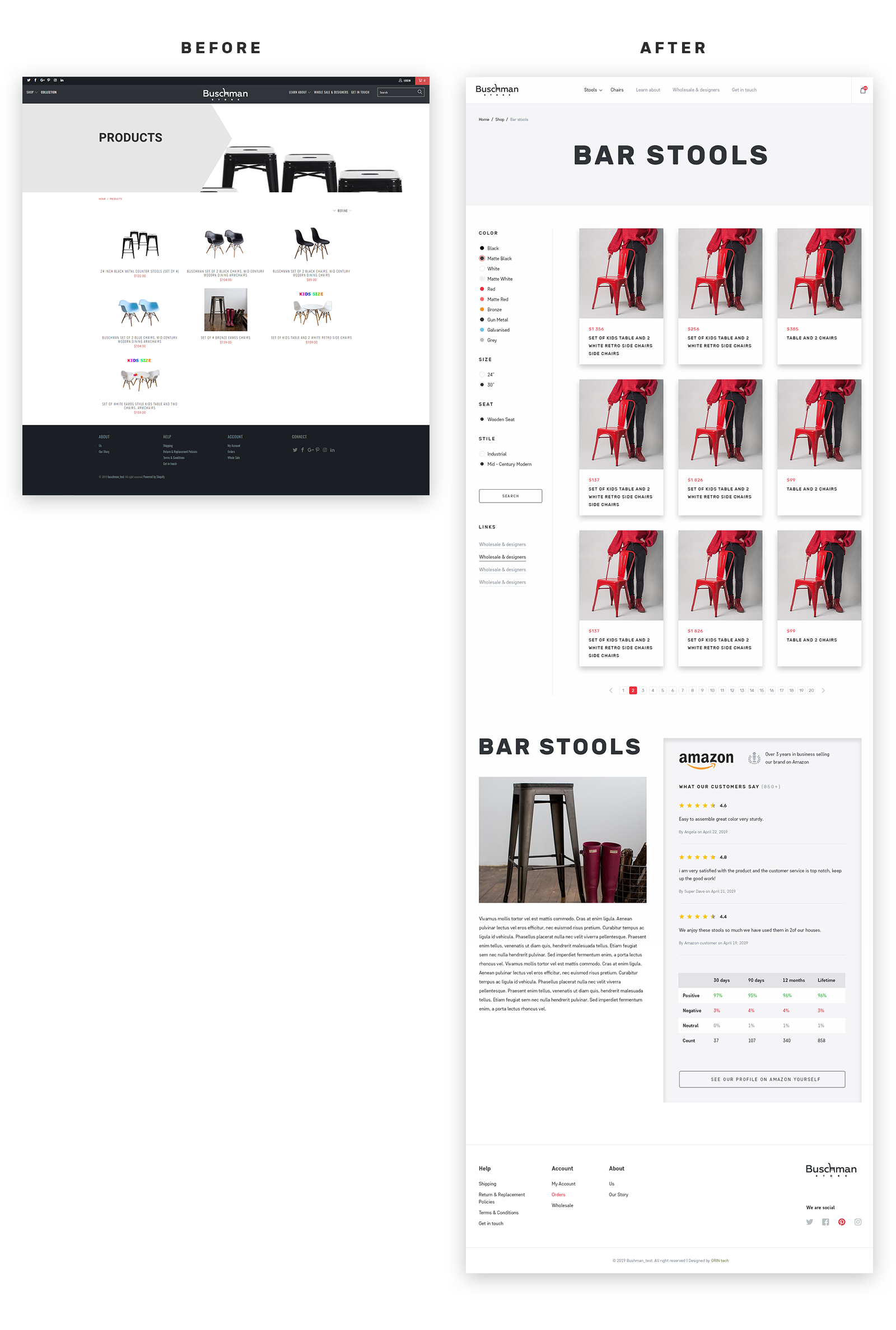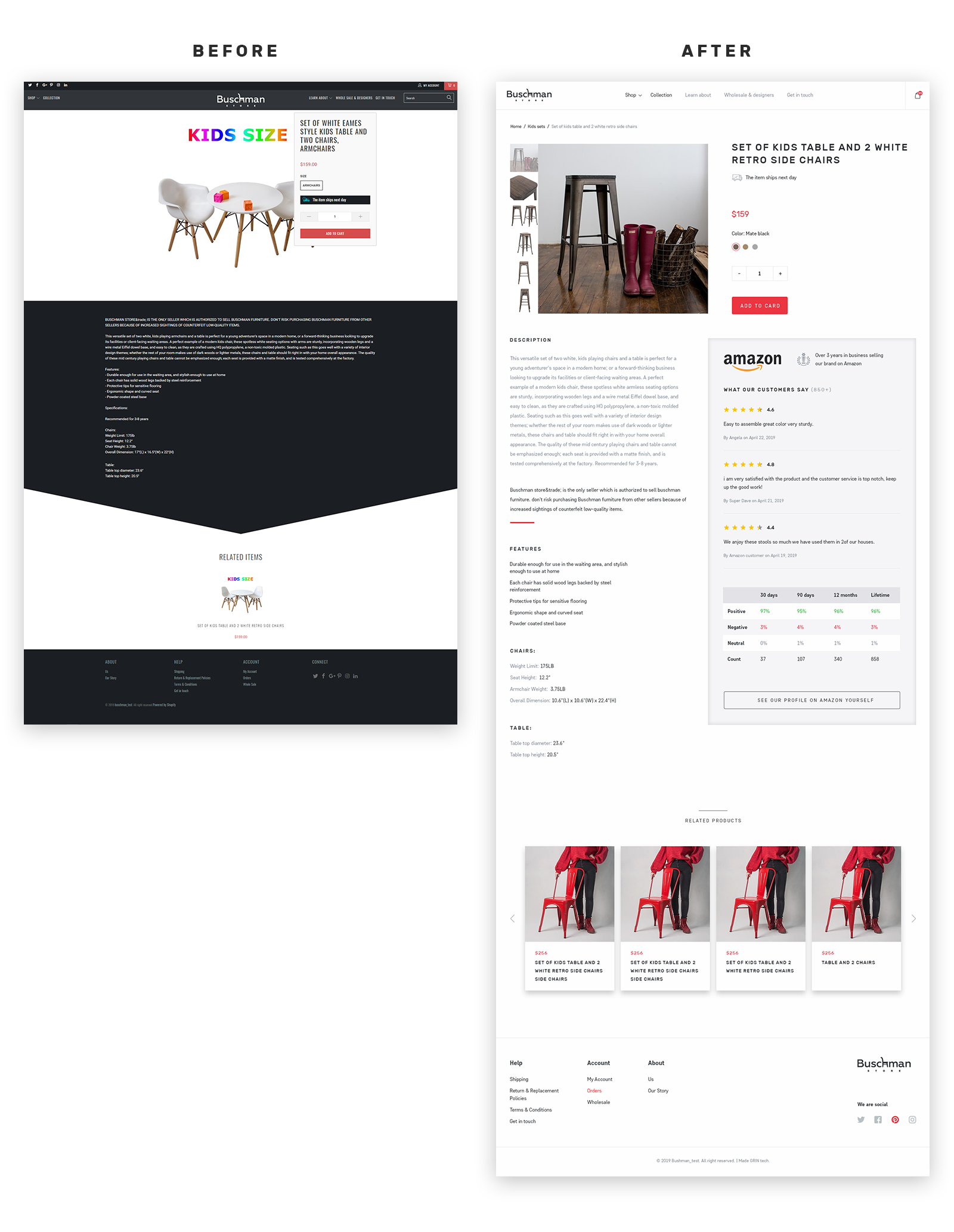Buschman Store successfully sells bar stools and chairs on Amazon for over three years now. Naturally, having a polished back office and supply chain they wanted to diversify distribution channels and scale.
April 2017 they made the first sale through their website at buschmanstore.com
April 22, 2019 owner agreed to pass the web store entirely to the GRIN tech team to update and promote.
Audits to kickstart the project
Ecosystem
The first step is to figure out who does what on the client side and how to communicate with them. Then get access to analytics, internal docs, production website and setup testing environment (awful experience with Shopify after pleasant years of Continuous Integration, sigh).
What did we find out here?
Perfect back office & fulfillment run almost on autopilot. And no e-commerce tracking setup, given that previous marketing agency had budget spent at tens of thousand dollars.
Marketing
As of now, there are a few hundred sales that originate from two sources:
- Customers searching for the brand name because of Amazon’s marketing efforts and ending up buying directly
- Few marketing campaigns via Facebook & Google Ads that didn’t show even breakeven Return On Advertisement Spending
Adwords audit
When we get to launch PPC ads for projects that had no success with it in the past, I am always worried.
What if everything already works fine and ROAS sucks for a different reason?
Audit highlights:
- No goals imported (because no e-commerce tracking was set up at all)
- Not a best-fit conversion attribution model (“last click” instead of “Linear” or “Position” models)
- Groups have too many keywords. Having too many of them in one group decreases the ad’s score leading to fewer impressions and higher costs.
- Only one ad copy, i.e., there are no variants testing
- No negative keywords on a campaign level
- One campaign had mobile, and tablet traffic disabled the rest did not include such a setting
- No retargeting campaign at all. Retargeting strategy done right is massive leverage of marketing efforts. Not to mention advanced strategies like CRM retargeting, email retargeting, etc
- Google Shopping Ads were fine
All in all, we are about to launch a revisited campaign. I will update this case study as soon as we accumulate statistics, which we will because here is how proper e-commerce tracking looks like:

SEO: keyword research
The harsh truth about e-commerce is that SKUs volume is like a Death Star weapon. Think of Amazon that built its business on massive book listings driving immense traffic, given hundred sounds of pages with titles and lack of competition in the 90s Internet.
More products mean more categories which mean more SEO & marketing opportunities. So we did keyword research on bar stools & dining chairs and created 35 new collections that did include items and 24 “coming soon” collections to rank them in advance and give the owner incentive to introduce new products.
Here is the old menu:

Here is a new one (done in HTML & CSS so you can play with it while we get deep links)
Media outreach
When I have to explain SEO real fast, I say there are only
- technical SEO which every decent competitor already doing right,
- Content creation
- Backlinks
So, how do we get backlinks to newly born (dull from webmasters viewpoint) collections?
Getting other websites to link to yours is not fun & scalable at all, so we built GRIN launcher – fully managed outreach platform.
Here is a sneak peek of Buschman Store campaign:

In a nutshell, we pitch editorial teams with a content contribution (guest posting). Possible outcomes then include:
- Positive replies, no fees, just excellent content & genuine relationships
- Positive responses, asking for a contribution fee.
- I think for an online store this is an equally excellent outcome because when you pay for content submission, you have better negotiation leverage and can force more deep links to product pages and categories you want to rank
- Fuck off (i.e., opt-outs). As the saying goes – if we don’t get at least one ‘fuck off’ a week we are not trying hard enough
Redesign
My main concern was far from the perfect header (menu) which I showcased earlier. It wasn’t destined for a lot of landing pages and was bulky in general. Here is what we did to other core pages:
Home page

Category page

Product card
Moar social proof!

Further planning & execution
For most online stores SEO and PPC ads are a foundation to validate the system and scale it further.
So as we hit our goals, we’ll do a revision of Facebook ads, add Pinterest to the marketing mix (both organic & paid), explore aggregators beyond Amazon and so on.
Stay tuned.